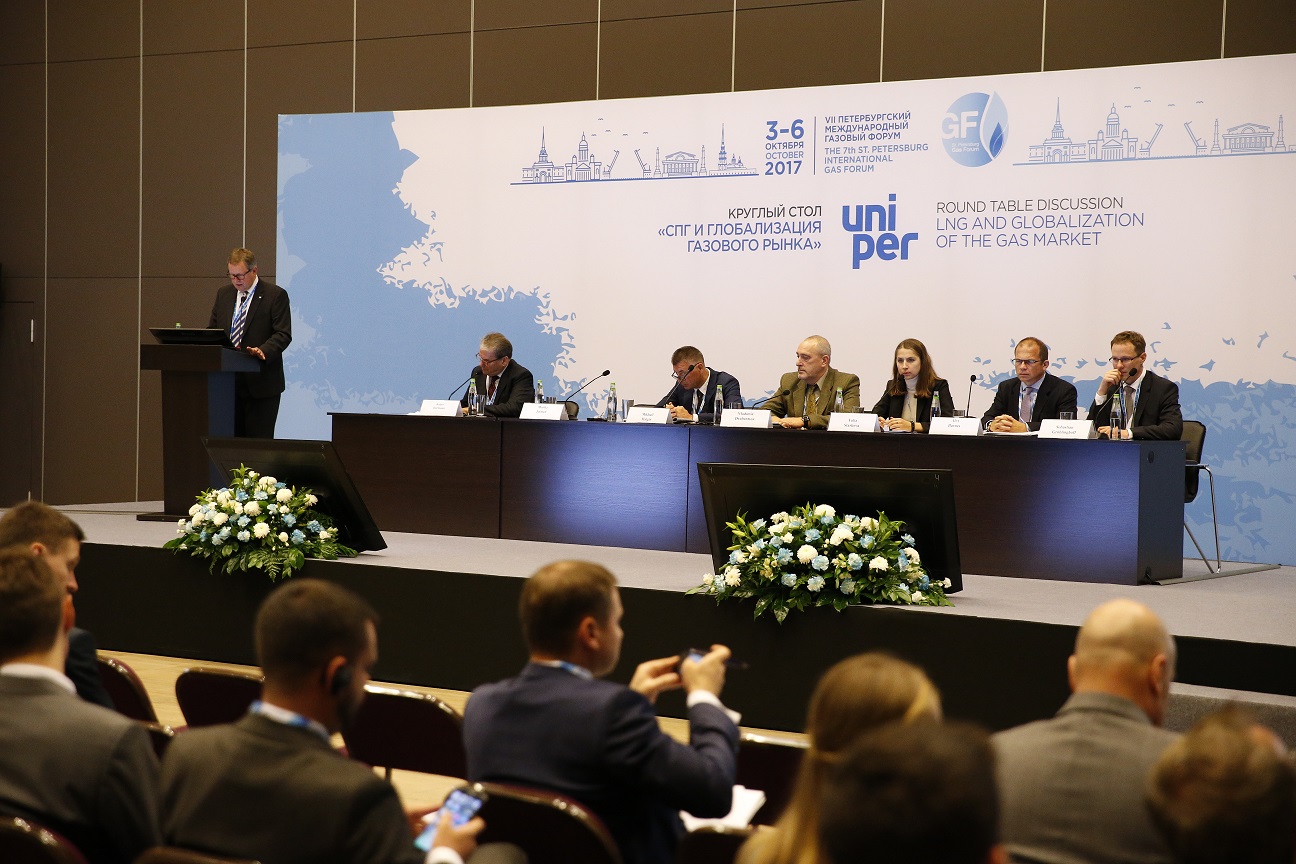
On October 4, a round table discussion was held as a part of the S-Petersburg International Gas Forum, where key players of the gas industry reviewed the phenomenon of gas market globalization associated with advent of LNG on a large-scale.
Jochen Moritz, VP, Uniper Global Commodities SE highlighted recent trends in LNG and the global market: “Presently, the gas industry is stepping up production of LNG, and we see growing demand in developing countries, in Central America, in South America, in the Pacific Rim countries. We also see a positive balance of demand and supply, and strong potential for development in India, Pakistan, and, possibly, in Egypt. Huge investments are made in LNG across the globe. Hence questions are asked now as to where the global market is going, where potential buyers are located and who can afford LNG”. He also referred to a number of issues preventing LNG development: comeback to use of nuclear energy, development of renewable energy sources and narrowing difference in prices for energy sources. For one, Germany may be mentioned as a positive example of wide spread application of LNG where this type of fuel is actively used in transportation. To cup it, Johann Moritz invited all participants in the round table discussion to visit his company booth where a STRALIS NP highway hauler powered with a natural gas driven engine was on display.
Mikhail Malgyn, Deputy Head, Department of Gas Exports to Nordic and South-Western Europe, OOO Gazprom Export, spoke at length about their hands-on experience of running operations in the European market in a constantly changing environment: “It is precisely due to LNG that the gas market is going global, because it connects regional markets across the globe and increases capacities. The market is constantly changing. We have to respond and to adjust our strategy accordingly”. He emphasized that the rules of the game had changed – previously all players would prefer to build their relations on long-term contracts while these days such approach is no longer the preferred option. LNG development presents a challenge because prices become less predictable and, correspondingly, investments are going down. “Another challenge is the growing tax burden. As of now, wholesale prices have been brought down, but the end user is not getting the resulting benefit which is pocketed by trading companies”, – believes Mikhail Malgyn. He also mentioned that chances for development were available: Gazprom ranks the first both world-wise and Europe-wise in terms of natural gas exports. Now, the company continues to solidify its positions in the EU market, is addressing infrastructural issues and maintaining a dialogue with Ukraine.
Vladimir Drebentsov, Manager for Russia and CIS in BP Russia, chose to speak about the price convergence in the market and suggested that advance in technology and reducing costs of producing LNG would bring LNG from the U.S. to European markets. If this happens, then those sellers who could offer better terms to buyers would prevail.
Yulia Starkova, LNG Senior Analyst, OOO Gazprom Neft Marine Bunker, outlined prospects for use of LNG for bunkering. Starting in 2015, more stringent environment protection rules were put in place preventing use of high sulphur fuels which, in turn, prompted development of the market for LNG as bunkering. Gas is 40% cheaper than fuel oil and it is possible to refuel ships en route – majority of ship owners are ordering ships driven by LNG. Gazprom Oil Marine Bunker believes that large-scale expansion of this market depends on infrastructure development and standardization in the industry.